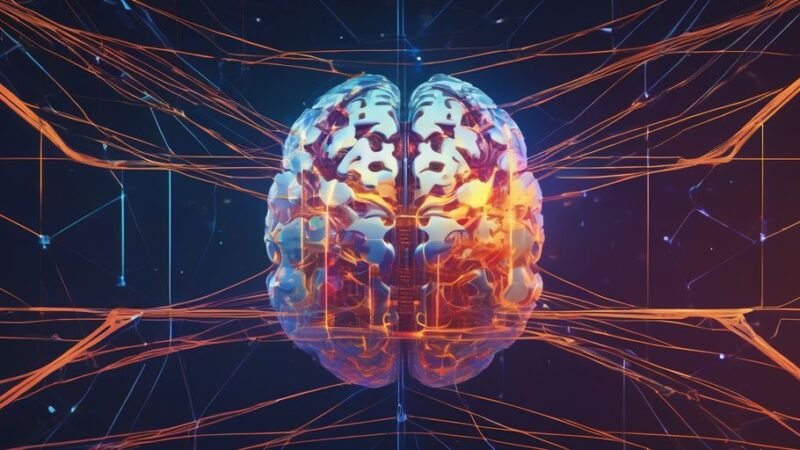Deep Dive into the Risks of Deep Nude AI Technology

DeepNude, an AI-powered software notorious for its ability to create realistic nude images of individuals, has sparked significant safety, ethics, and privacy concerns. This article delves into the risks associated with DeepNude technology, exploring its implications for personal privacy, societal norms, and the broader digital landscape. We will examine the technology’s legal, ethical, and societal impacts, and discuss measures to mitigate its misuse.
Key Takeaways
- Deep Nude technology utilizes advanced AI algorithms to generate non-consensual nude images, raising significant ethical and privacy concerns.
- The technology’s ability to disseminate images widely and quickly magnifies its potential for harm, particularly towards women and vulnerable groups.
- Legal frameworks currently lag behind technological advancements, necessitating urgent regulatory and legislative action to protect individuals.
- Technological countermeasures and community vigilance are crucial in detecting and preventing the misuse of Deep Nude technology.
- Ongoing discussions and proactive measures by AI developers and platforms are essential to foster responsible use and development of AI technologies.
Understanding Deep Nude Technology
Mechanics and Algorithms
Deep nude technology leverages sophisticated algorithms and neural networks, core components of deep learning and AI. These systems are trained on vast datasets of nude images to learn intricate patterns of human anatomy and various clothing styles. Once trained, the AI can analyze an input image and generate a new version where the clothing is removed, replaced with a realistic nude body based on the learned patterns.
Historical Emergence
Deep Nude technology initially gained attention in 2019 when it was released as a downloadable application. It utilized deep learning algorithms to generate explicit images by removing clothing from photos of clothed individuals. The controversial nature of the software quickly sparked a debate about its safety and ethical implications.
Comparison with Deepfake Technology
Deep nude technology is a specific application of deep learning that creates realistic images by digitally altering the clothing and bodies of individuals in photographs, making them appear nude. This technology falls under the broader category of deepfakes, which are synthetic media where a person’s likeness is replaced with someone else’s likeness, often without their consent.
Legal and Ethical Considerations
Current Legal Frameworks
The proliferation of deep nude technology poses significant legal challenges. Jurisdictions worldwide are grappling with the task of regulating the creation and distribution of these images, with laws varying significantly from one region to another.
Ethical Dilemmas
The ethical implications of this technology touch on core values of consent, privacy, and respect for personal dignity. Ethically, the use of this technology without consent is indefensible, underlining the need for a concerted effort to establish norms that protect individuals’ rights.
Global Regulatory Variations
Despite its controversial status, the emergence of deep nude technology has forced a reevaluation of digital ethics and privacy laws. This serves as a stark reminder of the potential for technology to be used in ways that can deeply affect individuals’ lives and societal norms.
Societal Impacts of Deep Nude AI
Privacy and Consent Issues
The societal impact of deep nude technology is profound, touching on issues of privacy, mental health, and the integrity of digital spaces. The creation and distribution of non-consensual images, facilitated by technologies like Makenude AI, challenge the very notions of personal privacy and consent in the digital age.
Impact on Women and Vulnerable Groups
The initial reception to deep nude technology was overwhelmingly negative, particularly due to its potential to harm and degrade women and vulnerable groups. This technology has sparked a broader discussion about the responsibilities of AI developers and the platforms that might host such content.
Long-term Societal Consequences
The persistent nature of digital content means that victims continue to suffer long-term consequences. Addressing this issue requires a coordinated approach involving legal reforms, technological solutions, and a societal commitment to respecting privacy and dignity in the digital realm.
Technological Countermeasures
Detection and Prevention Technologies
In the battle against deep nude AI, detection and prevention technologies play a crucial role. AI detection tools, such as Microsoft’s ‘Video Authenticator’, analyze media for signs of manipulation, including inconsistencies in lighting and textures. These tools are essential for identifying and mitigating the risks associated with deep nude content.
Role of AI in Combating Misuse
AI not only creates challenges but also offers solutions. Leveraging AI to combat the misuse of deep nude technology involves developing sophisticated algorithms that can outpace the manipulative capabilities of deepfakes. This includes enhancing multi-factor authentication systems with features like certified liveness detection to provide robust security measures.
Effectiveness of Current Solutions
While current technological solutions are impactful, they require continuous improvement to keep up with evolving threats. A multifaceted approach, including ongoing research and broad-based awareness campaigns, is vital for these technologies to remain effective. Organizations should also augment these solutions with strong cybersecurity practices, such as anti-phishing software and regular software updates.
The Role of AI Developers and Platforms
Responsibilities and Ethical Obligations
AI developers and platforms hold a critical role in shaping the ethical landscape of technology use. They must ensure that their innovations, especially in sensitive areas like deep nude technology, do not harm societal norms or individual privacy. This involves implementing robust ethical guidelines and conducting thorough impact assessments before releasing new technologies.
Impact of Hosting and Distribution
The platforms that host and distribute AI-generated content, including deep nude images, face significant scrutiny. They must balance innovation with responsibility, ensuring that they do not become conduits for harmful content. Effective moderation policies and transparent user agreements are essential in maintaining trust and legality.
Guidelines for Ethical AI Development
Developing ethical AI requires a clear framework that addresses both current and potential future challenges. AI developers should focus on creating systems that are transparent, accountable, and fair. This includes regular audits, stakeholder engagement, and adherence to international standards to prevent misuse and ensure that AI serves the public good.
Future Prospects and Innovations
Advancements in AI Safety
The proactive development of more advanced detection algorithms is essential for creating a safer digital environment. This includes international cooperation on legal standards and norms, as well as educating the public about the implications of deepfake technology. Promoting ethical digital behavior is key in mitigating the societal impact of non-consensual content.
Potential Positive Applications
There’s potential for deepfake technology in humanitarian efforts, such as reconstructing lost cultural heritage or creating powerful simulations for emergency preparedness training. It could also be used in anonymous testimonials, protecting the identities of vulnerable individuals while sharing their stories.
Predictions for Regulatory Changes
The discussion around deepfake and related technologies is evolving, with experts considering both their positive potential and the necessity for careful regulation to prevent abuse. Future regulatory changes are likely to focus on enhancing privacy measures and establishing more robust legal frameworks to address the ethical and privacy concerns raised by these technologies.
Conclusion
In conclusion, the exploration of deep nude AI technology reveals a complex landscape of innovation intertwined with significant ethical and societal challenges. As this technology continues to evolve, it is imperative to balance the potential benefits with the need for stringent ethical standards and robust legal frameworks. The dual-edged nature of deep nude AI not only highlights the capabilities of artificial intelligence but also underscores the critical importance of consent, privacy, and respect in the digital age. Moving forward, a collaborative effort among technologists, lawmakers, and society at large is essential to harness the benefits of AI while safeguarding individual rights and maintaining societal values.
Frequently Asked Questions
What is Deep Nude technology?
Deep Nude technology is an AI-powered software that generates realistic nude images of individuals from clothed photos by using advanced algorithms and neural networks trained on vast datasets of nude images.
How does Deep Nude technology differ from Deepfake technology?
While both technologies involve synthetic media creation, Deep Nude specifically alters images to remove clothing and create nude representations, whereas Deepfake technology generally swaps one person’s likeness with another’s across various media forms.
What are the primary ethical concerns associated with Deep Nude technology?
The main ethical concerns include privacy violations, non-consensual image creation and distribution, and the potential to harm and degrade individuals, particularly women and vulnerable groups.
What legal measures are in place to combat the misuse of Deep Nude technology?
The legal frameworks vary globally, but they generally include laws against non-consensual pornography, digital harassment, and privacy breaches. However, enforcement can be challenging due to the international nature of the internet and technological limitations.
How can technology be used to detect and prevent the misuse of Deep Nude technology?
Technological countermeasures include AI-driven detection tools that identify and flag synthetic media, digital watermarking to trace image origins, and machine learning models that can differentiate between real and altered images to prevent misuse.
What role do AI developers and platforms have in preventing the misuse of Deep Nude technology?
AI developers and platforms are responsible for implementing ethical guidelines, ensuring user consent, and developing technologies that respect privacy. They also need to actively participate in regulatory discussions and adhere to legal standards to prevent misuse.






